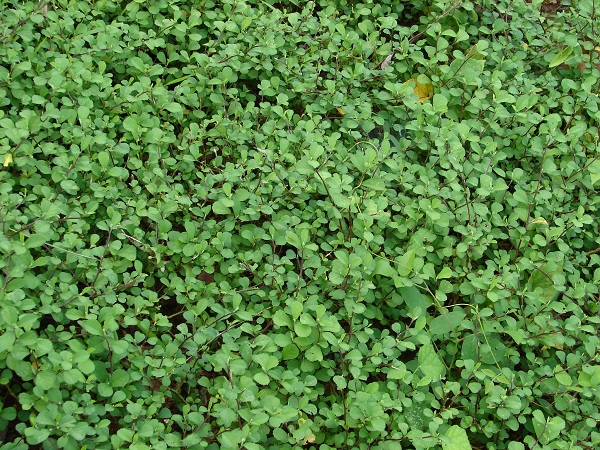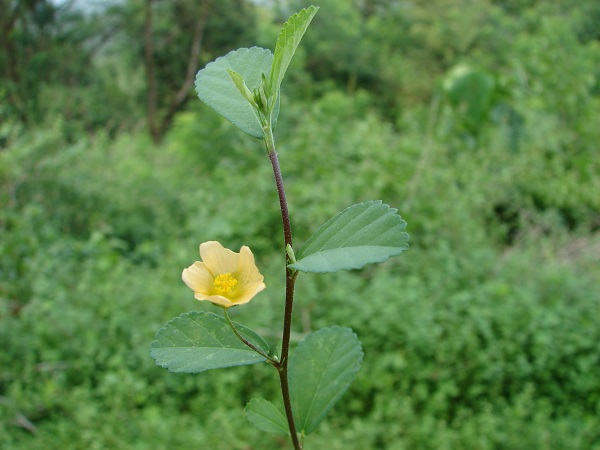
| Family | Malvaceae |
| English Name | Cuban jute, Jelly leaf |
| Malayalam Name | Kurunthotti |
| Tamil Name | Chittamutti |
| Kannada Name | Cheruparuva |
| Telugu Name | Chittamutti |
| Hindi Name | Sahadeva, Bhiunli |
| Sanskrit Name | Bala |
| Trade Name | Kurunthotti |
| Part Used | Dried roots and Whole plant |
| In Wild | Yes |
| Under Cultivation | Yes |
| Temperature | NA |
| Rainfall | NA |
| Farmers | NA |
| Traders | NA |
| Institution | NA |
| Individually | NA |
| State/Region | NA |
| District | NA |
| Nursery Information | NA |
| Yield | The dry weight yield of roots is estimated to be 10–15 quintals/hectare. |
| Economic of cultivation | NA |
| Quantitative quality standards | a. Foreign matter (other plant parts, soil, stone, sand, dust, organisms and their parts: Not more than 2.0 percent (w/w). b. Ash: Not more than 5 percent (w/w). c. Acid-insoluble ash: Not more than 1.0 percent (w/v). d. Ethanol-soluble extractives: Not less than 3.0 percent (w/v). e. Water-soluble extractive: Not less than 8 percent (w/v). |
| Description | NA |
| Agro technology/Cultivation practices | Agro-ecological requirements The plant can grow in variety of soils, but grows well in well drained gravel soil. Planting-stock production VEGETATIVE PROPAGATION : Sida is propagated using tender stem cuttings of 15-20 cm long and 3-4 nodes. Immediate propagation following collection is best for good results. Nursery preparation can be done March-April. For this, tender stem cuttings are prepared in desire lengths. Fill polybags about 1/3 full with well drained potting mixture prepared using farmyard/vermicompost, top soil and sand in the ratio 1:1:1. Place the cuttings each per poly bag and kept in a moist humid environment. Rooting hormone increases the rooting percentage of this species. It will take 20 to 30 days for rooting and well grown propagules are ready for transplanting. SEED PROPAGATION : The crop can be raised easily through direct sowing of seeds in monsoon season. Seeds gets matured in September to November. A single plant can produce as many as 11,600 seeds. Seeds are small (62500 seeds/kg) and they remain dormant for one year. For better germination soak the seeds for 24 hours prior to planting. The seedlings can be raised from seeds in the nursery in March–April. The seeds are shown in poly bags with a potting mix containing soil, sand and farmyard in the ratio 1:1:1. After emerging, the seedlings of 7-14 days old are transplanted into main field. If seeds are sown directly in main field produce uneven or dense crop stand. Cultivation Field planting: For planting, the land is repeatedly ploughed to a fine tilth and remove the weeds and pebbles. The seedlings are transplanted at a spacing of 75×85 cm2. The crop is given 2-3 periodic weeding and hoeing at an interval of 20-30 days. Manuring/Fertilization: For a hectare of land, 20-25 tonnes of farmyard/ vermicompost to be applied at the time of planting for fertile soils and 15-18 tonnes for moderately fertile soils. Green manuring is effective where irrigation facilities are available. Irrigation: Irrigation is not essential in rainy season, during summer provide irrigation twice in a week. Pest and diseases: Not reported. |
| Harversting | Maximum biomass is obtained in 5-6 months. Good light intensity is essential for good yield and the optimum stage of harvest is 8 months after planting. |
| Processing | The roots are uprooted, washed, cleaned, and dried in shade. The dried produce is packed in gunny bags and stored under humidity-free conditions. |
| References | NA |

